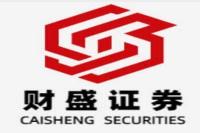Riding the Resource Wave: How New Materials and Industries are Reshaping China's Smaller Cities
Meta Description: Explore the transformative power of new materials and industries in revitalizing resource-based cities in China, focusing on successful case studies and future challenges. Keywords: Resource-based cities, new materials, new industries, economic transformation, China, sustainable development, advanced manufacturing clusters.
This isn't your grandpappy's resource-based city story! For decades, towns built on the backs of coal, iron, and oil have been painted with a broad brush: booms followed by busts, leaving behind economic scars and dwindling populations. Think of the Rust Belt in the US, or the coal towns of Appalachia – images of struggling economies and ghost towns spring to mind. But China's resource-based cities are rewriting the narrative, weaving a vibrant new chapter fueled by innovation, smart planning, and a savvy embrace of the new economy. This isn't just about surviving; it's about thriving. We're talking about a complete metamorphosis, a phoenix rising from the ashes of traditional resource dependence. We'll delve into the fascinating success stories of cities like Baguod, Jinchang, and others who have ingeniously leveraged their existing resources to create thriving new industries, attracting investment and creating jobs in a way that seemed impossible just a decade ago. This isn't some theoretical discussion; we'll uncover the nitty-gritty details, the strategies, and the challenges faced by these forward-thinking municipalities. Prepare to be amazed by the ingenuity and resilience of these cities, and gain valuable insights into how resource-based economies can not only survive but flourish in the 21st century. Get ready for a deep dive into the compelling world of China's resource-based city revolution!
Resource-Based Cities: A New Dawn?
For years, cities like Daqing, Hegang, Yulin, Karamay, Anshan, and Baotou were synonymous with their natural resources – oil, coal, steel. They achieved national recognition, but their futures seemed inextricably linked to the fluctuating prices and eventual depletion of these resources. Some continued relying on their traditional industries, others crumbled under the weight of resource exhaustion, while a few remarkably pivoted towards a brighter future. The key? Embracing "new resources" and "new industries."
This isn't a simple shift; it's a complete overhaul of economic strategy. It’s about taking existing resources – often those previously considered byproducts or even waste – and repurposing them into valuable components for high-tech industries. It's about embracing strategic partnerships, attracting investment, and fostering a culture of innovation. It’s a story of adaptation, resilience, and a bold vision for the future.
The Rise of "New Resources"
The story of Hegang, a city once reliant on coal, is a poignant example. Four years ago, headlines about its astonishingly low housing prices brought it into the national spotlight, highlighting the consequences of resource depletion. But the narrative is far from over. Other cities, like Baotou, initially known as the "Steel City of the Grasslands," show a different path. Boasting significant rare earth reserves, Baotou cleverly capitalized on the burgeoning demand for magnets in renewable energy technologies like wind turbines and electric vehicles.
The Ministry of Industry and Information Technology (MIIT) recently recognized this strategic shift. In 2024, 35 national advanced manufacturing clusters were announced, many of which were located in smaller western cities, leveraging their unique resource advantages. These weren't just old-school resources; these were new resources, forming the bedrock for high-growth industries.
The list of successful clusters is impressive:
- Jinchang-Baiyin-Lanzhou-Wuwei Non-ferrous Metal Cluster: Leverages the region's abundant nickel, cobalt, and platinum group metals.
- Zhengzhou-Nanyang-Shangqiu-Xuchang Superhard Materials Cluster: Capitalizes on the region's dominance in diamond and cubic boron nitride production.
- Yingtan-Shangrao-Fuzhou-Nanchang Copper-based New Materials Cluster: Highlights the region's copper resources and downstream applications.
- Urumqi-Changji-Shihezi Photovoltaic Cluster: Focuses on the solar energy sector.
- Dianzhong Rare and Precious Metal Cluster (Kunming, Qujing, Chuxiong, Honghe): Utilizes Yunnan's rich reserves of rare and precious metals.
These cities aren't just extracting raw materials; they're transforming them into sophisticated, value-added products. Jinchang, for instance, boasts the world's third-largest nickel reserves and the largest in Asia. Its strategic focus on nickel-copper-cobalt new materials, and related downstream applications in energy storage, is a testament to this approach.
The Power of "New Industries"
The "new resources" are fueling a surge in "new industries," primarily in the new energy and new materials sectors. The high-GDP growth rates of cities like Jinchang (19.3% in the first three quarters of 2024) underscores the transformative potential. Their success isn't accidental; it's the result of strategic planning and a shift away from dependence on traditional, exhaustible resources.
This strategic shift is evident in the rise of unicorn companies – those privately held startup companies valued at over $1 billion – in smaller cities. These companies are drawn to regions with abundant resources and a supportive business environment.
Examples include:
- Del Technology: Located in Longyan, Fujian, leveraging the region's gold and copper resources for fluorine-containing new materials used in semiconductors and batteries.
- Yuze New Energy: Based in Chuxiong, Yunnan, capitalizing on the region's rich non-ferrous metal resources.
- Yidao New Energy: A unicorn company in Quzhou, Zhejiang, benefitting from the region's position as a global leader in cobalt materials for the lithium-ion battery industry.
- Rongtong High-tech: Located in Huangshi, Hubei, manufacturing lithium iron phosphate batteries, leveraging access to nearby copper, iron, lithium, and phosphorus resources.
This isn't just about individual companies; it's about the creation of entire ecosystems, with clusters of interconnected businesses supporting each other and driving mutual growth. The emergence of these clusters, particularly in smaller cities, is a game-changer.
A New Landscape for Resource-Based Cities
In 2013, the State Council of China identified 262 resource-based cities, categorizing them based on their economic status. The initial focus was on traditional resources like coal, oil, and iron ore. However, the landscape is changing rapidly. The rise of new energy and new materials is creating opportunities for even smaller cities to compete on a national and global scale.
The shift is evident in the MIIT's announcements. While the 2022 list of advanced manufacturing clusters was heavily skewed towards larger cities, the 2024 list showcased a significant increase in clusters in smaller, western cities – a direct result of their strategic embrace of new resources and new industries.
This transformation isn't without its challenges. The depletion of natural resources remains a long-term concern. Cities must proactively plan for a future beyond their current resource base, diversifying their economies and investing in human capital. Sustainable development is paramount, ensuring that economic growth doesn't come at the expense of environmental protection.
The success stories of cities like Baotou and Jinchang demonstrate that resource-based cities can not only survive but thrive in the 21st century. However, this success requires strategic planning, innovation, and a willingness to embrace change. The future of these cities is not predetermined; it's being written, one innovative project at a time.
Frequently Asked Questions (FAQs)
Q1: What are the main challenges facing resource-based cities in China?
A1: The primary challenges include resource depletion, economic diversification, environmental protection, infrastructure development, and attracting and retaining talent. Over-reliance on a single industry makes these cities vulnerable to price fluctuations and resource exhaustion.
Q2: How are these cities attracting new industries and investment?
A2: Cities are actively promoting themselves as attractive investment destinations by highlighting their resource endowments, building robust infrastructure, providing tax incentives, and fostering a business-friendly environment. They also emphasize partnerships with universities and research institutions to encourage innovation.
Q3: What role does technology play in the transformation of resource-based cities?
A3: Technology is pivotal. Advanced manufacturing techniques, automation, and the adoption of sustainable technologies are essential for efficient resource utilization and minimizing environmental impact. Digital technologies are also transforming governance and service delivery.
Q4: Are there any examples of failed transformations in resource-based cities?
A4: Yes, some cities have struggled with their transformation efforts due to various factors, including a lack of planning, resistance to change, insufficient investment, and inadequate infrastructure. Hegang's experience serves as a cautionary tale of the consequences of failing to diversify the economy.
Q5: What is the government's role in supporting the transformation of resource-based cities?
A5: The Chinese government plays a crucial role through policy support, financial incentives, infrastructure investment, and the promotion of sustainable development practices. The designation of national advanced manufacturing clusters provides significant benefits and recognition.
Q6: What is the long-term outlook for resource-based cities?
A6: The long-term outlook depends on their ability to successfully diversify their economies, embrace innovation, and adopt sustainable development strategies. Those that successfully transition to new industries and leverage their existing resources will likely thrive; those that fail to adapt may face continued economic challenges.
Conclusion
The transformation of China's resource-based cities is a compelling narrative of economic adaptation and innovation. While the challenges are significant, the success stories demonstrate the potential for these cities to not only survive but thrive in the 21st century. Through strategic planning, investment in new industries, embracing technology, and a focus on sustainable development, these cities are forging a new path, one that offers valuable lessons for other resource-dependent regions worldwide. The future is bright for those cities that can successfully navigate the transition, leveraging their unique assets to create thriving, sustainable economies. The key, as we've seen, is to ride the wave of change – and not be swept away by it.



